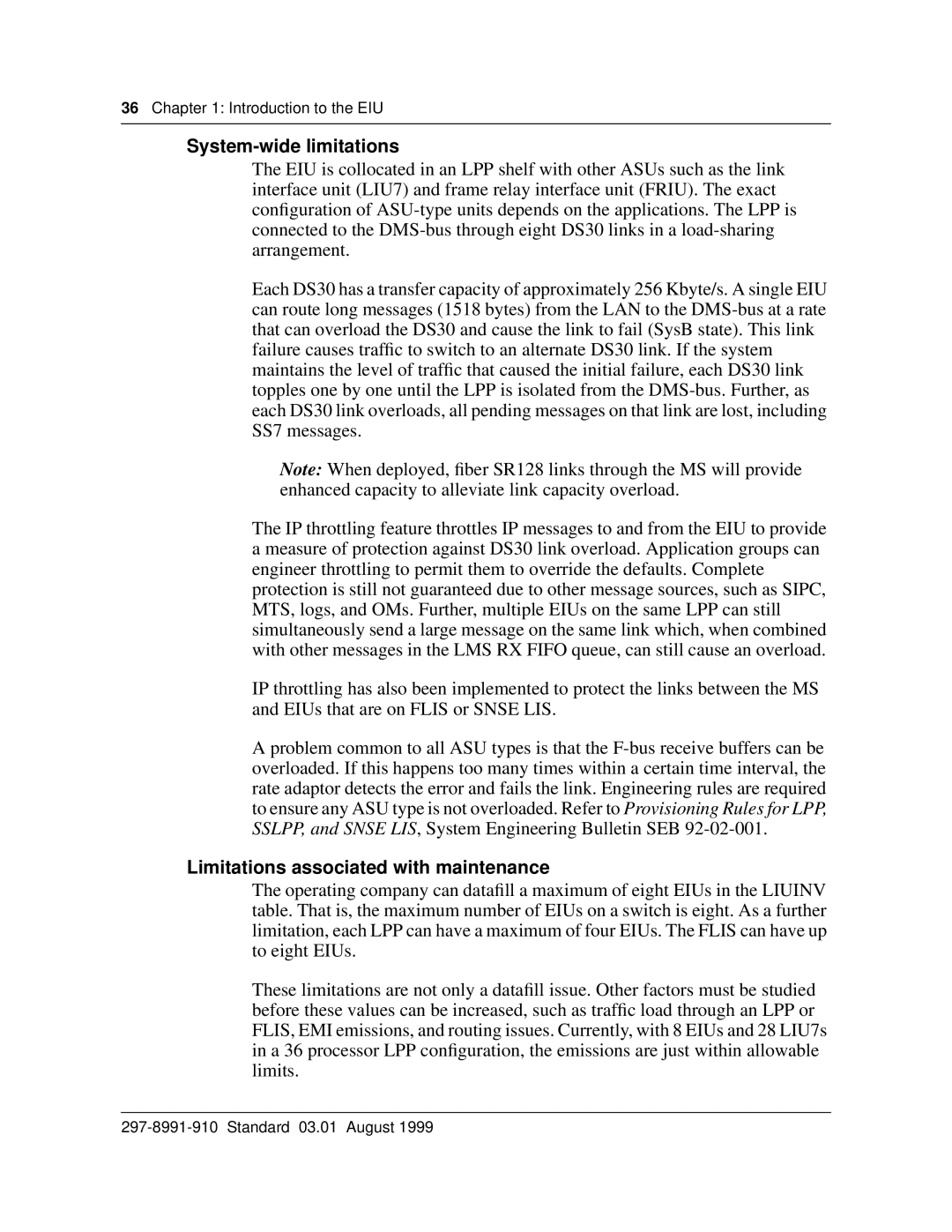
36Chapter 1: Introduction to the EIU
System-wide limitations
The EIU is collocated in an LPP shelf with other ASUs such as the link interface unit (LIU7) and frame relay interface unit (FRIU). The exact configuration of
Each DS30 has a transfer capacity of approximately 256 Kbyte/s. A single EIU can route long messages (1518 bytes) from the LAN to the
Note: When deployed, fiber SR128 links through the MS will provide enhanced capacity to alleviate link capacity overload.
The IP throttling feature throttles IP messages to and from the EIU to provide a measure of protection against DS30 link overload. Application groups can engineer throttling to permit them to override the defaults. Complete protection is still not guaranteed due to other message sources, such as SIPC, MTS, logs, and OMs. Further, multiple EIUs on the same LPP can still simultaneously send a large message on the same link which, when combined with other messages in the LMS RX FIFO queue, can still cause an overload.
IP throttling has also been implemented to protect the links between the MS and EIUs that are on FLIS or SNSE LIS.
A problem common to all ASU types is that the
Limitations associated with maintenance
The operating company can datafill a maximum of eight EIUs in the LIUINV table. That is, the maximum number of EIUs on a switch is eight. As a further limitation, each LPP can have a maximum of four EIUs. The FLIS can have up to eight EIUs.
These limitations are not only a datafill issue. Other factors must be studied before these values can be increased, such as traffic load through an LPP or FLIS, EMI emissions, and routing issues. Currently, with 8 EIUs and 28 LIU7s in a 36 processor LPP configuration, the emissions are just within allowable limits.
